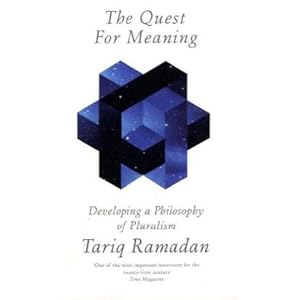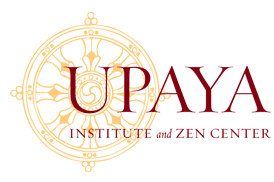He has been foundational in both social psychology and constructivist psychology. While many psychologists have found his perspectives extreme (and they are, in some respects), his contribution to the whole field of postmodern psychology has been immense (especially in the development of "the narrative turn" in modern therapies).
From Wikipedia, this is a brief introduction to social constructionism, a of cousin social constructivism, the movement with which Gergen is most closely associated (to clarify, social constructionism is more of a sociological field, while social constructivism is more psychological - but Wikipedia's entry on social constructivism is lame):
Jerome Bruner, Rom Harre, and even Jon Searle are all major figures in this field.Social constructionism and social constructivism are sociological theories of knowledge that consider how social phenomena or objects of consciousness develop in social contexts. Within constructionist thought, a social construction (social construct) is a concept or practice that is the construct (or artifact) of a particular group. When we say that something is socially constructed, we are focusing on its dependence on contingent variables of our social selves rather than any inherent quality that it possesses in itself. Thus our notion of a "cousin," what this terms includes and doesn't include and what it means to us does not exist "out there" in the world, but only in and through the social instutitions that give it meaning within a culture. [1] The underlying assumptions on which social constructivism is typically seen to be based are reality, knowledge, and learning.[2]
Social constructs are generally understood to be the by-products of countless human choices rather than laws resulting from divine will or nature. This is not usually taken to imply a radical anti-determinism, however. Social constructionism is usually opposed to essentialism, which defines specific phenomena instead in terms of inherent and transhistorical essences independent of conscious beings that determine the categorical structure of reality. [3]
A major focus of social constructionism is to uncover the ways in which individuals and groups participate in the construction of their perceived social reality. It involves looking at the ways social phenomena are created, institutionalized, known, and made into tradition by humans. The social construction of reality is an ongoing, dynamic process that is (and must be) reproduced by people acting on their interpretations and their knowledge of it. Because social constructs as facets of reality and objects of knowledge are not "given" by nature, they must be constantly maintained and re-affirmed in order to persist. This process also introduces the possibility of change: what "justice" is and what it means shifts from one generation to the next.
Ian Hacking noted in "The Social Construction of What?" that social construction talk is often in reference to not only worldly items, like things and facts – but also to our beliefs about them.[4] It is relevant to note that this perspective is often correctly closely connected with many contemporary theories, perhaps most notably the developmental theories of Vygotsky and Bruner.[5]
Gergen has made a lot (if not all) of his articles available online as PDFs - which is very cool for those of us who cannot afford to pay between $10 and $50 for each manuscript from the journals themselves (hello, open source?). Here is a list of articles relevant to his latest book, Relational Being: Beyond Self and Community, which I am reading and enjoying - and will be quoting from here in this post.
Relational Theory and the Self (all of his articles are at this link):
- Relativism, Religion, and Relational Being (pdf)
- Ethnographic Representation as Relationship (pdf)
- Social Theory in Context: Relational Humanism (pdf)
- When Relationships Generate Realities: Therapeutic Communication Reconsidered (pdf)
- Writing as Relationship (pdf)
- A Civil World beyond Individual and Community (pdf)
- Social Construction and Theology (pdf)
- The Self: Colonization in Psychology and Society (pdf)
- Self and Community in the New Floating Worlds (pdf)
- The Place of the Psyche in a Constructed World (pdf)
- Therapeutic challenges of multi-being (pdf)
Anyway, the following are some quotes from Relational Being, but I am reading a Kindle version, so I can only give "locations," not page numbers (sorry about that). One of the interesting things about this book is that he has written it to reflect the ideas he is presenting, for example, he includes theory, biographical sections, quotes from others, art and photography, and so on - demonstrating that much of what generally conceive as "mine" is more often more rightly seen as "ours."
Loc. 99-101Gotta love Bertrand Russell - well, I guess you don't have to . . . but I do.
My hope is to demonstrate that virtually all intelligible action is born, sustained, and/or extinguished within the ongoing process of relationship. From this standpoint there is no isolated self or fully private experience. Rather, we exist in a world of co-constitution. We are always already emerging from relationship; we cannot step out of relationship; even in our most private moments we are never alone.
Loc. 545
Man is not a solitary animal, and so long as social life survives, self-realization cannot be the supreme principle of ethics. - Bertrand Russell
I like this next quote a lot - it offers an explanation for how we present and experience different selves in different contexts, suggesting not only that we have various selves, but that they are context dependent much of the time.
Loc. 744-47And then this . . .
The world is awash in conflict between those clinging to tradition versus those careening toward the new. Yet, if there is no intelligibility outside constraint, how are we to account for change? The major answer lies in our movement from one relational context to another. As we move from the home, to the office, to a visit with friends, to the sports field, and so on we carry with us patterns of speaking and acting. These practices are now inserted into the new contexts, and supplemented in new ways. The words and actions now acquire different functions. They become increasingly meaning/full.
Loc. 764-65Here is one of those autobiographical sections, but it illustrates a pivotal concept in Gergen's theory, that of confluence.
Let's return to the construction of the self. Through co-action we come into being as individual identities, but the process remains forever incomplete. At any moment there are multiple options, and self-identity remains in motion.
Loc. 897-910One of the criticisms of Gergen's work over the years has been that it is not socially engaged or attempting to make the world a better place (a "failure to take moral or political stands"). I think those critics have failed to grasp his project, as this next quote demonstrates:
Mary and I once puzzled over the fact that every Christmas time we labored to decorate the house. The decorating cost us time and money; there was no obvious gain. Nothing dire would befall us if we failed to do so. Why, we asked, do we do it? We now see this as a misleading question. We decorate neither for a reason that lies somewhere inside, or pressures from the outside. Rather, we decorate because we exist within a confluence - an array of mutually defining relationships with each other and our surrounds. When the season is upon us, such actions are obvious ways of going on; they are congenial within the confluence. If we were at a dinner party we would eat, if we were at a concert we would applaud. We do not do so for reasons of private origin, or because someone "makes us do it," but because we are participants in a confluence of relationships in which these are intelligible actions.
The critic takes notice: "This suggests to me that you as a physical person have no will of your own. Your actions matter little; it is the confluence that counts. Doesn't this view stifle our motivation for change? Doesn't it favor the status quo, suggesting that an individual's efforts are futile?" Not at all. You will certainly import into any situation a set of preferred performances. They don't represent "will power," so much as a set of relationally established trajectories. And they can be enormously important when injected into a given confluence. Consider the power that even a single word or phrase may have in a given context: "You are fired," "I quit," or "we are finished." The same holds true of one's movements: a raised fist, a derisive laugh, an embrace. Even one's physical presence may alter the confluence. Depending on the circumstances, simply standing there as an observer, a demonstrator, or a mourner may all change the definition of the situation. And we must also consider the objects that are present. A vase of flowers, a menorah, a dog, a weapon on the wall ... all are subtle means of shifting the potentials of the situation. To be sure, it may be useful to distinguish between constituents of a confluence that are central to its form as opposed to peripheral. But people can also be enormously flexible and creative in sustaining a given definition of the situation as various people, objects, and actions shift over time.
Loc. 911-13
The critic remains skeptical: "Practically speaking, I don't see where this idea of confluence takes us. What about scientific prediction? Are there any advantages here over the old mechanical model?" In response, there is nothing about the confluence orientation that rules out prediction.
Loc. 915-18
The advantage of the confluence orientation, however, is that we do not depend on independent factors or variables to make predictions. Rather than looking at "the effects" of income, education, and father absence on the child's school performance, for example, the concern shifts to the condition of relational life in which the child participates. Ethnography takes precedence over experimental manipulation. We shift from influence to confluence.
Loc. 924-27One of the major contributions of Spiral Dynamics has been to demonstrate that change at any level requires a shift of life conditions, or what Gergen might call confluences - physical and socio-cultural contexts must shift or be shifted if we want to make individual change possible.
Finally, it must be asked, why should the social sciences place so much value on the traditional practice of prediction? If we are concerned with human well-being, why examine present patterns to speculate about the future? As noted above, transformation in patterns of co-action is common. Today's research is about today; the conditions of tomorrow's world may be vastly different. If we wish to generate more promising futures, the major challenge is that of collaboratively creating new conditions of confluence. How can we draw from our relational histories in such a way that new and more promising confluences result?
Finally, here is a chunk of his argument against isolated consciousness. We are bio-psycho-socially embedded beings and, as such, our consciousness and our selves are relational in nature, not bounded by the borders of our bodies.
Loc. 948-61I'm only about a fifth of the way through the book, and I looked for some reviews to include to give you a better sense of the overall feel of the book, and I only found one good one, so here are a couple of paragraphs from Bjørn Gustavsen:
Being Unbound
The reality of the mind is also the reality of bounded being. Mental states constitute the very ingredients of the individual interior. One's ability to think, and feel, and choose are the very marks of being fully human. Would a child be normal without the ability to feel pleasure and pain, happiness or anger? Doesn't normal development include expanding one's capacities for abstract reasoning, conscience, and long-term planning? Could one function properly in society without having values, attitudes, and opinions? All such suppositions support and honor the tradition of the bounded self.
As I proposed in the initial chapter, the assumption of an internal or mental world invites alienation, loneliness, distrust, hierarchy, competition, and self-doubt; favored is a society in which people become commodities and relationships are devalued. Yet, as proposed in the preceding chapter, this concept of bounded being finds its origins not within the interior of individual minds, but within co-action. It is from relational process that the very idea of an "inner world" is created. Speaking of our thoughts, emotions, intentions, and the like is not required by the facts of nature. If we fail to speak in these terms, it is not that we fail to grasp reality. Rather, the language of the interior issues from a particular tradition of relationship. By the same token, we can also create together new ways of speaking and acting. We must not remain forever bound by history.
How could we, then, transform the language by which we live; how can we recognize the primacy of relationship in all that we do? This is the major challenge of this chapter and the next. My hope is to recast the discourse of mind in such a way that human connection replaces separation as the fundamental reality. Our understanding of the mental world will be reconstructed in such a way that the wall between inside and outside is removed; the mental will cease to exist separate from relationship. Then, with this reformulation in place, Parts II and III of this work will be devoted to linking concepts to practice. If a conception of relational being is to make any difference, it must be realized in our lives together.
In ”Relational Being”, Gergen raises the issue of man as a bounded individual, versus man as created by his relationships. Compared to many of his predecessors, the way in which Gergen conducts his discourse has some important advantages. Among these, his use of examples is immediately outstanding. All major points in his argument are illustrated and backed not only by examples, but by examples drawn from real everyday situations and practices. This is not only a convenience for the reader, as pointed out by theorists of science like Stephen Toulmin, it is the examples that carry the argument. If a point cannot be exemplified, it does not have any meaning. Gergen does, furthermore, radicalize the relational argument. Contrary to leaving at least some space for the bounded individual playing tactical games against his or her environment, Gergen wants to do away with this figure altogether, and see man as fully created, or constructed, through relationships.
Much of Gergen`s discussion centre around the relationship between a bounded, versus a relational interpretation of words. Let us say that someone calls someone else “authoritarian”. Seemingly, this is a characteristic of the individual, something that emanates from “inside” the person. However, for the concept of authoritarian to have meaning, there must also be something that we can call non-authoritarian. Only when a set of characteristics can be held up against a set of contrasting characteristics, do we understand what the characteristics mean. There is, however, a further set of conditions: To understand “authoritarian” we need some kind of experience with “authoritarianism” and its antithesis. Unless we have lived experience with the phenomena under discussion, the words characterizing the phenomena will be empty. Gergen shows how the words that we generally take to characterize individuals and set them apart from their environment, in reality gain their meaning from relationships. This is not simply an abstract, “theoretical” point. Gergen shows, through numerous examples, how an individualistic, bounded interpretation of people leads us astray in our relationships, not only to individual people, but to groups, organizations and society.











 Listen/View
Listen/View

